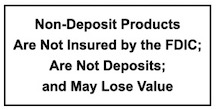Switching banks doesn’t have to be complicated. With a bit of preparation, the transition can be smooth and hassle-free.
Follow these easy steps to ensure you cover all your bases:
1. Choose Your New Bank (psst, we think First Savings Bank is pretty fantastic 😉)
- Look for services, locations, online capabilities, fees, and customer service that meet your needs.
2. Open Your New Account
- Visit your chosen bank to open an account.
- Deposit an initial amount if required.
3. List Your Automatic Transactions
- Direct Deposits: Paychecks, pensions, social security, or other recurring deposits.
- Automatic Payments: Utilities, subscriptions, mortgages, insurance, or any regular payments.
4. Redirect Your Direct Deposits
- Provide your employer (or other payers) with your new account details.
- Check processing times to avoid gaps in your income stream.
5. Update Automatic Payments
- Contact service providers with your new account information to avoid missed payments.
- Keep track of the confirmation numbers or emails.
6. Transfer Recurring Payments via Debit/Credit Cards
- Update your billing information for online subscriptions or services linked to your previous debit or credit card.
7. Monitor Your Old Account
- Leave enough money temporarily in your old account to cover any unforeseen expenses or automatic charges.
- Regularly check your old account statements.
8. Close Your Old Account
- Once all automatic payments and direct deposits have successfully moved, contact your old bank to close your account.
- Request a written confirmation of account closure for your records.
9. Safely Dispose of Old Checks and Cards
- Shred unused checks, deposit slips, and old debit or ATM cards to protect your identity.
Switching banks is a fresh start! Follow these steps, and you’ll be confidently managing your finances in no time.
For even more information, check out our Switch Kit!

